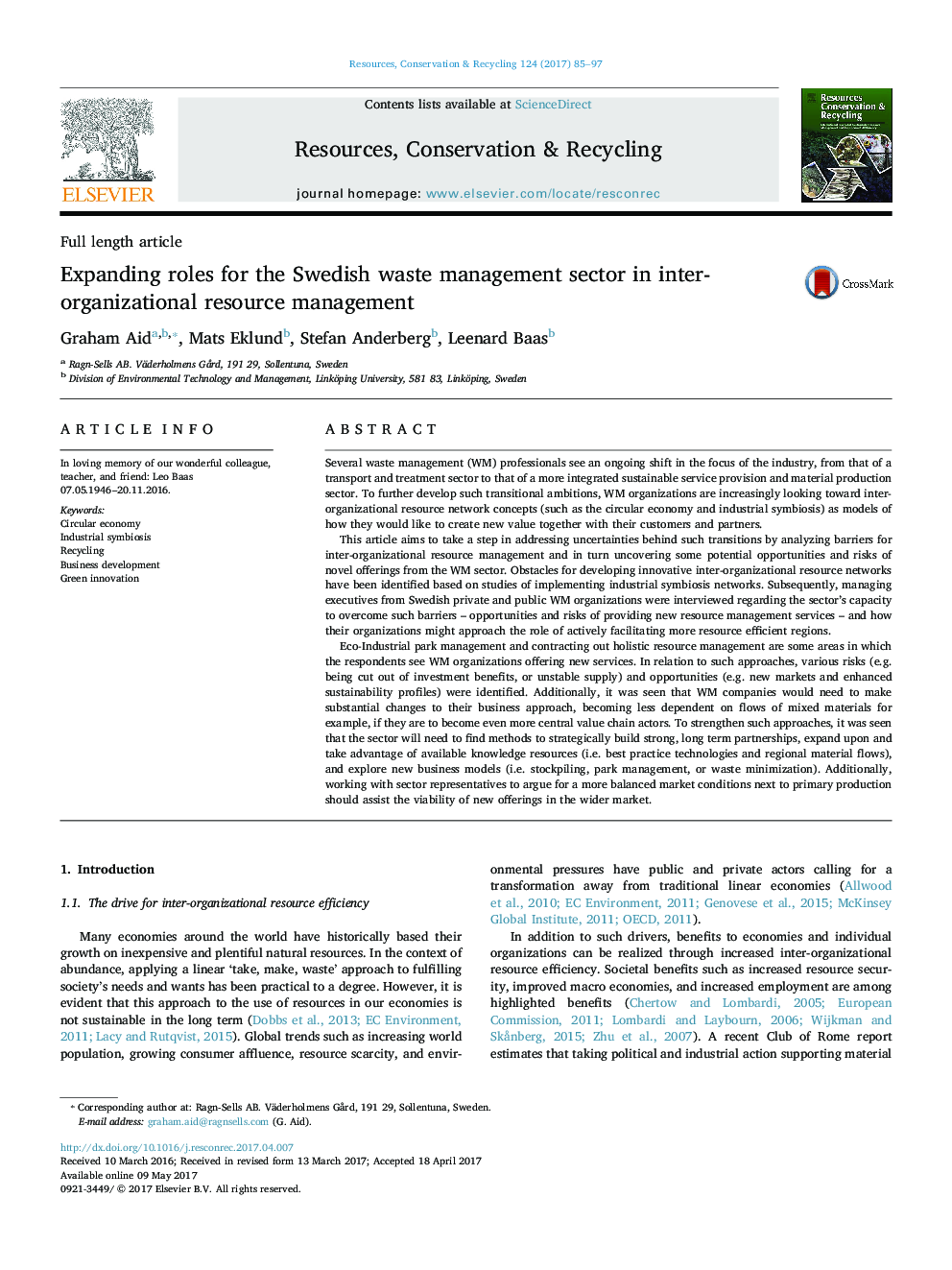| Article ID | Journal | Published Year | Pages | File Type |
|---|---|---|---|---|
| 5118728 | Resources, Conservation and Recycling | 2017 | 13 Pages |
â¢There are many barriers to implementing symbiotic and inter-organizational resource initiatives.â¢Waste management organizations are supplying services to ease these barriers.â¢Business models around innovation parks and source waste reduction are developing.â¢Long term partnerships are important for enabling more significant transitions.â¢Balancing market mechanisms is key for facilitators from waste management.
Several waste management (WM) professionals see an ongoing shift in the focus of the industry, from that of a transport and treatment sector to that of a more integrated sustainable service provision and material production sector. To further develop such transitional ambitions, WM organizations are increasingly looking toward inter-organizational resource network concepts (such as the circular economy and industrial symbiosis) as models of how they would like to create new value together with their customers and partners.This article aims to take a step in addressing uncertainties behind such transitions by analyzing barriers for inter-organizational resource management and in turn uncovering some potential opportunities and risks of novel offerings from the WM sector. Obstacles for developing innovative inter-organizational resource networks have been identified based on studies of implementing industrial symbiosis networks. Subsequently, managing executives from Swedish private and public WM organizations were interviewed regarding the sector's capacity to overcome such barriers - opportunities and risks of providing new resource management services - and how their organizations might approach the role of actively facilitating more resource efficient regions.Eco-Industrial park management and contracting out holistic resource management are some areas in which the respondents see WM organizations offering new services. In relation to such approaches, various risks (e.g. being cut out of investment benefits, or unstable supply) and opportunities (e.g. new markets and enhanced sustainability profiles) were identified. Additionally, it was seen that WM companies would need to make substantial changes to their business approach, becoming less dependent on flows of mixed materials for example, if they are to become even more central value chain actors. To strengthen such approaches, it was seen that the sector will need to find methods to strategically build strong, long term partnerships, expand upon and take advantage of available knowledge resources (i.e. best practice technologies and regional material flows), and explore new business models (i.e. stockpiling, park management, or waste minimization). Additionally, working with sector representatives to argue for a more balanced market conditions next to primary production should assist the viability of new offerings in the wider market.
